Kikimora – Nightly Evil Female Spirit And Goddess Of Chickens In Slavic Beliefs
A. Sutherland - AncientPages.com - Ancient beliefs say that Kikimora spirits (there are many of them) probably live in every household. However, in some versions of her story, she usually appears in homes of dysfunctional, unhappy families where abuse, quarrel, and screams occur daily.
Swamp Kikimora, after which the spider Kikimora palustris is named. Art work by symbolist
painter Vasiliy Ivanovich Denisov (1862–1922).
Kikimora originates in Slavic folklore. In the ancient beliefs of the East Slavs, there are two different kinds of Kikimoras.
One dwells in the forest and is married to the Domovik (Domovoi). The other one comes from the swamp and is married to Leshy.
Kikimora sleeps in dark places of the home, usually in the cellar or behind the furnace, and during the nights, she comes out and works with weaving, spinning, and needlework.
If the home is well kept, Kikimora is happy with the family. She helps them with housework, guards the family members, and protects the chickens. Generally, Kikimora likes skillful and hard-working women that perform their traditional work at home.
An angry and displeased Kikimora may be a troublesome spirit for the family because she interferes in people's lives, disturbs their sleep (mainly irritating children), and makes noises by scratching and whistling at night. She also moves and throws objects, makes them disappear, or changes their places.
Appearance Of Kikimora And Her Psychic Abilities
She is an evil spirit in the form of a small woman with a thimble head, long flowing hair, chicken feet, a body as thin as a straw, and a face, which is almost human-like but shapeless. Kikimora could quickly become invisible.
Illustration of a Kikimora (1934) by Ivan Bilibin (1876-1942). (Kikimora as house-spirit and guardian of chickens - hence her depiction in chicken-like form). Image credit: Ivan Bilibin - Public Domain
Despite her small size, she is a powerful spirit with psychic abilities that help to warn her family of a disaster or dangerous enemies approaching the house where she lives. In other words, she first delivers warnings of misfortune rather than good news.
However, she can be a challenging spirit to work with and keep happy. Once Kikimora is inside the house, it is difficult to get her to leave.
To encounter Kikimora spinning was believed to be a bad omen of impending death.
Kikimora – A 'Chicken Goddess'
In the beliefs of Slavic people, Kikimora is a goddess of chickens. She guards them but sometimes torments them and can even harm pets. Kikimora wants a well-arranged chicken yard where all chickens laying eggs are protected.
The character of Kikimora became a popular inspiration for authors of fairy tales and musicians like Anatoly Lyadov (1855 -1914), a composer and a teacher. He wrote that Kikimora "grows up with a magician in the mountains. From dawn to sunset, the magician's cat entertains Kikimora with beautiful tales of ancient times and distant places as she rocks in a crystal cradle.
She spends her first seven years living in a magician's mountain cave, and after seven years, she leaves the cave to go live among people.
In his poem "Kikimora," Lyadov describes this house spirit as a tiny brown witch with a thimble-sized head and a body no wider than a straw.
Written by – A. Sutherland - AncientPages.com Senior Staff Writer
Updated on March 4, 2023
Copyright © AncientPages.com All rights reserved. This material may not be published, broadcast, rewritten or redistributed in whole or part without the express written permission of AncientPages.com
Expand for referencesMacculloch, J. A.. The Mythology of All Races Vol 3
Leeming, D. The Oxford Companion to World Mythology
Ivanits Linda J. Russian Folk Belief
More From Ancient Pages
-
 Hyperborea Or Atlantis Ruins – Underground Secrets Of The Sacred Lake On The Arctic Circle
Civilizations | Nov 17, 2014
Hyperborea Or Atlantis Ruins – Underground Secrets Of The Sacred Lake On The Arctic Circle
Civilizations | Nov 17, 2014 -
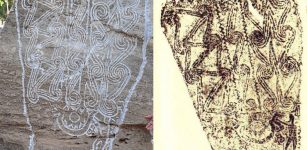 Bulgaria’s Reliefs From Ancient Thracian Sun Shrine – Restored
Artifacts | Sep 29, 2015
Bulgaria’s Reliefs From Ancient Thracian Sun Shrine – Restored
Artifacts | Sep 29, 2015 -
 Kunlun Mountain – Mythical Dwelling Place Of Gods, Sacred Animals And Symbol Of Axis Mundi In Chinese Mythology
Chinese Mythology | Jan 31, 2019
Kunlun Mountain – Mythical Dwelling Place Of Gods, Sacred Animals And Symbol Of Axis Mundi In Chinese Mythology
Chinese Mythology | Jan 31, 2019 -
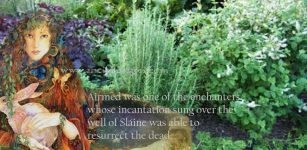 Airmid: Irish Goddess Of Healing And Herbs And One Of The Tuatha Dé Danann
Celtic Mythology | Feb 2, 2018
Airmid: Irish Goddess Of Healing And Herbs And One Of The Tuatha Dé Danann
Celtic Mythology | Feb 2, 2018 -
 Hero Stones Belonging to Pallava Era Found Near Tirupattur, India
Archaeology | Oct 15, 2015
Hero Stones Belonging to Pallava Era Found Near Tirupattur, India
Archaeology | Oct 15, 2015 -
 Mysterious Location Of The Amazing Land Of Punt – Can This Puzzle Be Solved One Day?
Featured Stories | Jul 18, 2016
Mysterious Location Of The Amazing Land Of Punt – Can This Puzzle Be Solved One Day?
Featured Stories | Jul 18, 2016 -
 Enoch – The Initiator – Pre-Flood Messenger Of God
Biblical Mysteries | Oct 5, 2015
Enoch – The Initiator – Pre-Flood Messenger Of God
Biblical Mysteries | Oct 5, 2015 -
 Varahamihira: Indian Sage And One Of The Greatest Minds Of All Time
Featured Stories | Sep 13, 2016
Varahamihira: Indian Sage And One Of The Greatest Minds Of All Time
Featured Stories | Sep 13, 2016 -
 Search For A Viking Cemetery Near Truso Settlement In Janow, Poland – Continues
Archaeology | Jul 23, 2020
Search For A Viking Cemetery Near Truso Settlement In Janow, Poland – Continues
Archaeology | Jul 23, 2020 -
 Ancient Basilica Cistern: Intriguing Hidden Subterranean World With Medusa Heads
Featured Stories | Dec 11, 2018
Ancient Basilica Cistern: Intriguing Hidden Subterranean World With Medusa Heads
Featured Stories | Dec 11, 2018 -
 Melisandre, The Red Woman: The History Behind Game Of Thrones’ Mysterious Mystic
Featured Stories | Jun 19, 2019
Melisandre, The Red Woman: The History Behind Game Of Thrones’ Mysterious Mystic
Featured Stories | Jun 19, 2019 -
 1,500-Year-Old Inscription ‘Christ, Born Of Mary’ Engraved On Magnificent Building Discovered In Israel
Archaeology | Jan 21, 2021
1,500-Year-Old Inscription ‘Christ, Born Of Mary’ Engraved On Magnificent Building Discovered In Israel
Archaeology | Jan 21, 2021 -
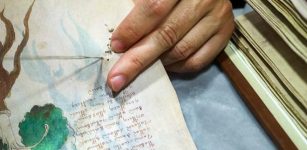 Enigmatic Voynich Manuscript: Computer Scientists From Alberta Use AI To Decipher Document
Archaeology | Jan 31, 2018
Enigmatic Voynich Manuscript: Computer Scientists From Alberta Use AI To Decipher Document
Archaeology | Jan 31, 2018 -
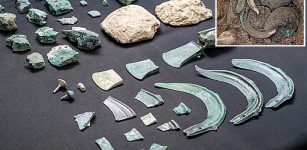 Unique 80 Bronze Age Artifacts Dated To Roman Campaign In The Alps In 15 BC – Discovered
Archaeology | Jul 3, 2023
Unique 80 Bronze Age Artifacts Dated To Roman Campaign In The Alps In 15 BC – Discovered
Archaeology | Jul 3, 2023 -
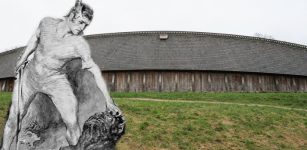 Lejre Viking Hall And Beowulf – What Is The Connection?
Featured Stories | Jun 3, 2024
Lejre Viking Hall And Beowulf – What Is The Connection?
Featured Stories | Jun 3, 2024 -
 Adad ‘Lord Of Abundance’- Mesopotamian Weather God Who Was Responsible For Fertility, Wealth And Oracles
Featured Stories | Mar 11, 2020
Adad ‘Lord Of Abundance’- Mesopotamian Weather God Who Was Responsible For Fertility, Wealth And Oracles
Featured Stories | Mar 11, 2020 -
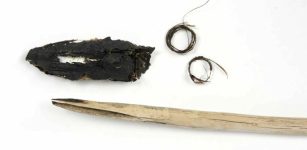 Surprising Discovery Of Unique 3,500- Year-Old Arrowheads Made Of Shells In The Jotunheimen Mountains
Archaeology | Feb 20, 2023
Surprising Discovery Of Unique 3,500- Year-Old Arrowheads Made Of Shells In The Jotunheimen Mountains
Archaeology | Feb 20, 2023 -
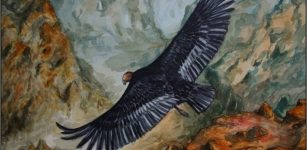 The Eagle And The Condor Prophecy: A 2,000-Year-Old Message For The Future
Featured Stories | Apr 21, 2017
The Eagle And The Condor Prophecy: A 2,000-Year-Old Message For The Future
Featured Stories | Apr 21, 2017 -
 12,000-Year-Old Archaeological Evidence Of Human-Dog Friendship In Alaska
Archaeology | Dec 5, 2024
12,000-Year-Old Archaeological Evidence Of Human-Dog Friendship In Alaska
Archaeology | Dec 5, 2024 -
 Something Never-Before-Seen Is Hidden Beneath 15 Giant Viking Burial Mounds Spotted By Radar In Norway
Archaeology | Jan 19, 2021
Something Never-Before-Seen Is Hidden Beneath 15 Giant Viking Burial Mounds Spotted By Radar In Norway
Archaeology | Jan 19, 2021


